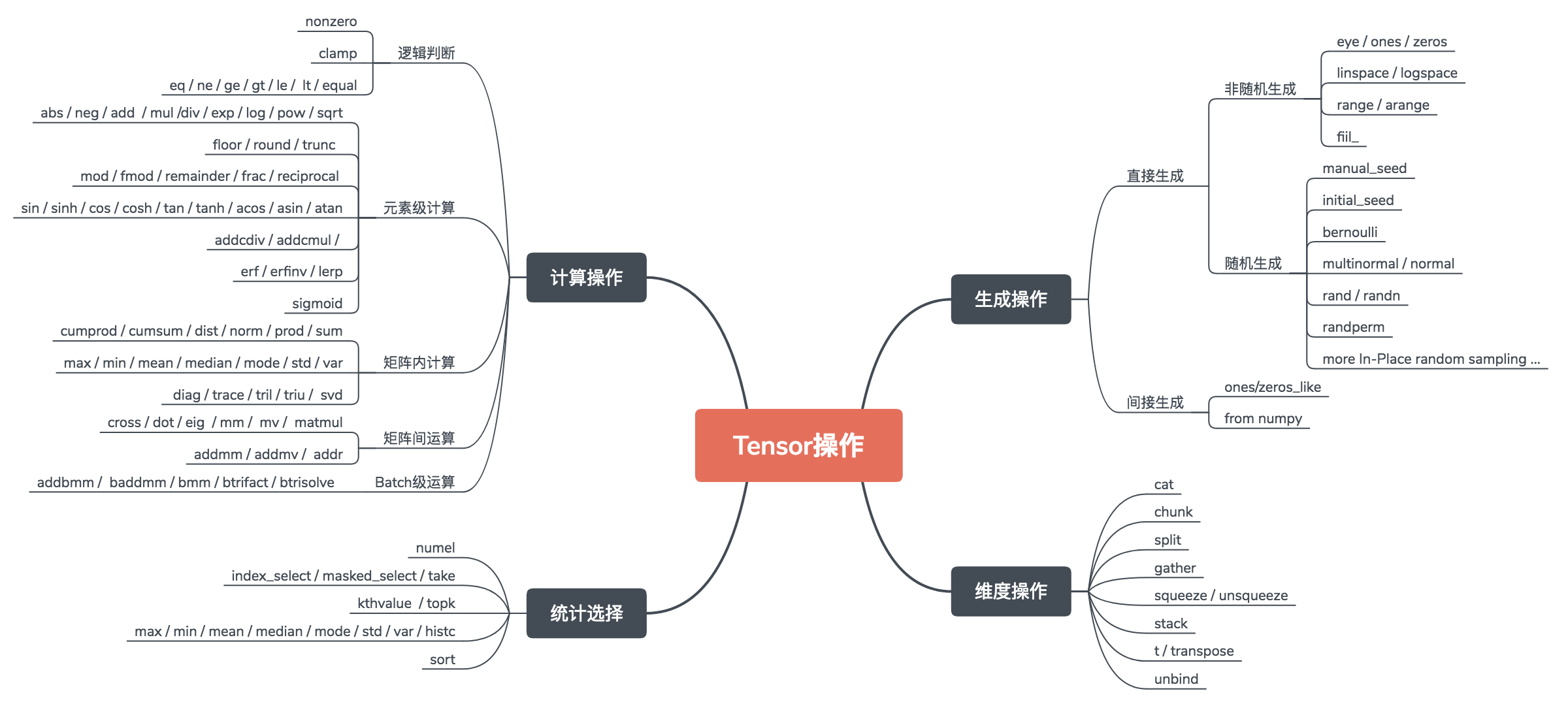This is a pytorch tutorial written in Chinese.
Tensor基本操作
常用库: torch torch.Tensor torch.autograd
通读官方基本计算操作:torch Tensor 操作官方文档

网络搭建流程
1.参数与日志设置:
常用库:argparse logging
Argparse总结: 简书 python argparse用法总结
Logging教程:简书 python logging使用教程
2.数据流:
常用库:torch.utils.data.Dataset torch.utils.data.DataLoader torchvision.dataset torchvision.transforms
流程:训练集 —> 测试集
Dataset类方法:PyTorch 数据集的读取 、莫烦 批训练
Pytorch utils.data 文档: 官方文档 (DataLoader类参数可以仔细阅读)
torchvision.transforms 变换举例: torchvision.transforms 中文文档
3.神经网络:
常用库:torch.autograd torch.nn
流程:定义网络 —> 定义前馈过程
自动求导机制简介: 自动求导机制中文文档 、知乎 自动梯度计算
Autograd.Function类: 自定义Function
4.优化方法:
常用库:torch.optim
5.训练过程:
常用库:torch.nn.Module torch.nn.functional torch.optim
流程:模式切换 —> 数据输入 (初始化 / 预训练) —> 梯度重置 —> 损失函数 —> 梯度回馈 —> 参数更新 —> 定期监控
预训练:知乎 PyTorch 预训练
保存提取:莫烦 PyTorch 保存提取
官方模型保存:推荐的模型保存方法
6.测试过程:
流程: 模式切换 —> 结果输出
X. 加速技巧:
常用库: multiprocessing torch.cuda torch.distributed torch.nn.parallel
有趣的实现要点
快速搭建模型
model = torch.nn.Sequential(
torch.nn.Linear(1, 10),
torch.nn.ReLU(),
torch.nn.Linear(10, 1)
)
关于CUDA控制:
CUDA判断:
args.cuda = not args.no_cuda and torch.cuda.is_available()
Model CUDA化:
if args.cuda:
model.cuda()
Variable CUDA化:
if args.cuda:
data, target = data.cuda(), target.cuda()
关于训练与验证模式:
训练模式:
# Sets the module in training mode
# Has any effect only on modules such as Dropout or BatchNorm.
model.train()
验证/测试模式:
# Sets the module in evaluation mode.
# This has any effect only on modules such as Dropout or BatchNorm.
model.eval()
关于数据载入:
逐行读入:
with open(filename) as f:
for line in f:
数据输入:
# generate (i, data) pair
for i, data in enumerate(trainloader, 0):
关于报错和断言:
assert os.path.isfile(img_path), "Not found image -->{}".format(img_path)
torch.arange 和 torch.range 的区别:
# torch.range is deprecated in favor of torch.arange and will be removed in 0.3.
# Note that arange generates values in [start; end), not [start; end].
print torch.arange(1,3)
print torch.range(1,3)
# 1
# 2
# [torch.FloatTensor of size 2]
# 1
# 2
# 3
# [torch.FloatTensor of size 3]